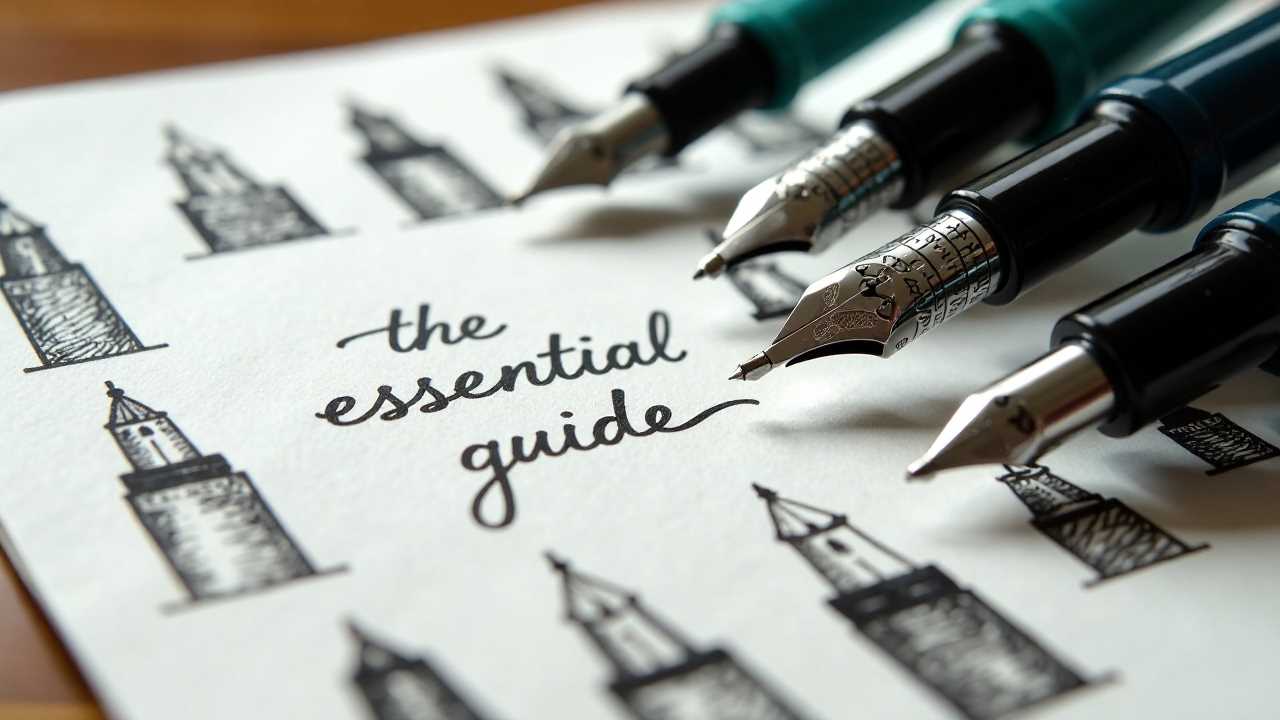
Understanding Left-Handed Writing Tools
Left-handed individuals often face unique challenges when it comes to writing. The left-handed writing tools available today are specifically designed to address these challenges, ensuring a smoother and more comfortable writing experience. This guide will explore the various options available, including left-handed pens, ergonomic grips, and considerations for ink flow, paper compatibility, and overall writing comfort.
Choosing the Right Left-Handed Pens
Selecting the right left-handed pen is paramount for achieving optimal writing comfort and efficiency. Left-handed pens are designed with features that cater to the specific needs of left-handed writers. One key aspect is the ink flow mechanism. Many left-handed pens utilize quick-drying ink to prevent smudging, a common issue for left-handed writers who drag their hands across the page.
When choosing a pen, consider the tip size. Finer tips can offer more precision, while broader tips may provide a bolder line. Brands like Pilot, Uni-ball, and Zebra offer a range of options tailored for left-handed users. Testing various pens is advisable, as personal preference plays a significant role in determining the best fit.
Ergonomic Grips for Enhanced Comfort
Ergonomic grips are another vital component of left-handed writing tools. These grips are designed to reduce strain on the hand and fingers, allowing for longer writing sessions without discomfort. Look for grips that provide a soft, cushioned feel and a shape that conforms to the natural curve of your fingers.
Many pens now come with built-in ergonomic grips, but you can also purchase separate grip accessories. When selecting an ergonomic grip, ensure it fits comfortably on the pen you choose. The right grip can significantly enhance your writing experience, making it more enjoyable and less fatiguing.
Ensuring Proper Ink Flow
Ink flow is a critical factor in the writing experience. Left-handed writers often encounter issues with ink smudging and skipping, which can disrupt the writing process. To avoid these problems, select pens that feature reliable ink delivery systems. Gel pens and rollerball pens are often favored for their smooth ink flow and quick-drying properties.
Consider the type of ink as well. Water-based inks tend to dry slower, which can lead to smudging, while oil-based inks generally dry faster. Experimenting with different types of ink can help you find the ideal match for your writing style.
Paper Compatibility Matters
The choice of paper is just as important as the pen itself. Paper compatibility can affect how the ink interacts with the surface, influencing the overall writing experience. For left-handed writers, smoother papers are often preferred, as they allow for easier pen movement and reduce the risk of smudging.
When selecting paper, consider the weight and texture. Heavier papers can absorb ink better and reduce bleed-through, while smoother finishes can enhance the writing experience. Brands like Rhodia and Leuchtturm1917 offer high-quality paper options that are well-suited for left-handed writing.
Writing Comfort: Finding Your Ideal Setup
Writing comfort is a multifaceted aspect that encompasses not only the tools you choose but also your writing posture and environment. To achieve optimal comfort, ensure that your writing surface is at a comfortable height and that your chair supports good posture.
Experiment with different writing angles to find what feels best for you. Some left-handed writers prefer to tilt their paper to avoid smudging while others may find a flat surface more comfortable. Adjusting your environment can lead to significant improvements in your writing experience.
Tool Selection: A Personal Journey
The journey to finding the perfect left-handed writing tools is highly personal. Each writer has unique preferences and styles that influence their tool selection. It’s important to take the time to explore various options and find what works best for you.
Consider creating a small toolkit that includes a few different types of left-handed pens, ergonomic grips, and a selection of paper. This allows you to experiment and discover your ideal combination. Don’t hesitate to seek recommendations from fellow left-handed writers or online communities dedicated to left-handed products.
Embracing Your Left-Handed Writing Journey
Mastering left-handed writing is about more than just the tools; it’s about embracing your unique style and finding what works best for you. With the right left-handed writing tools, including carefully selected left-handed pens, ergonomic grips, and compatible paper, you can enhance your writing experience and enjoy the process.
Take the time to explore your options, experiment with different tools, and create a writing setup that prioritizes comfort and efficiency. By investing in the right tools and understanding your needs as a left-handed writer, you can transform your writing experience into one that is enjoyable and fulfilling.
 Writing TipsCreative WritingJournalingSketching TechniquesBuying GuidesPrivacy PolicyTerms And Conditions
Writing TipsCreative WritingJournalingSketching TechniquesBuying GuidesPrivacy PolicyTerms And Conditions
